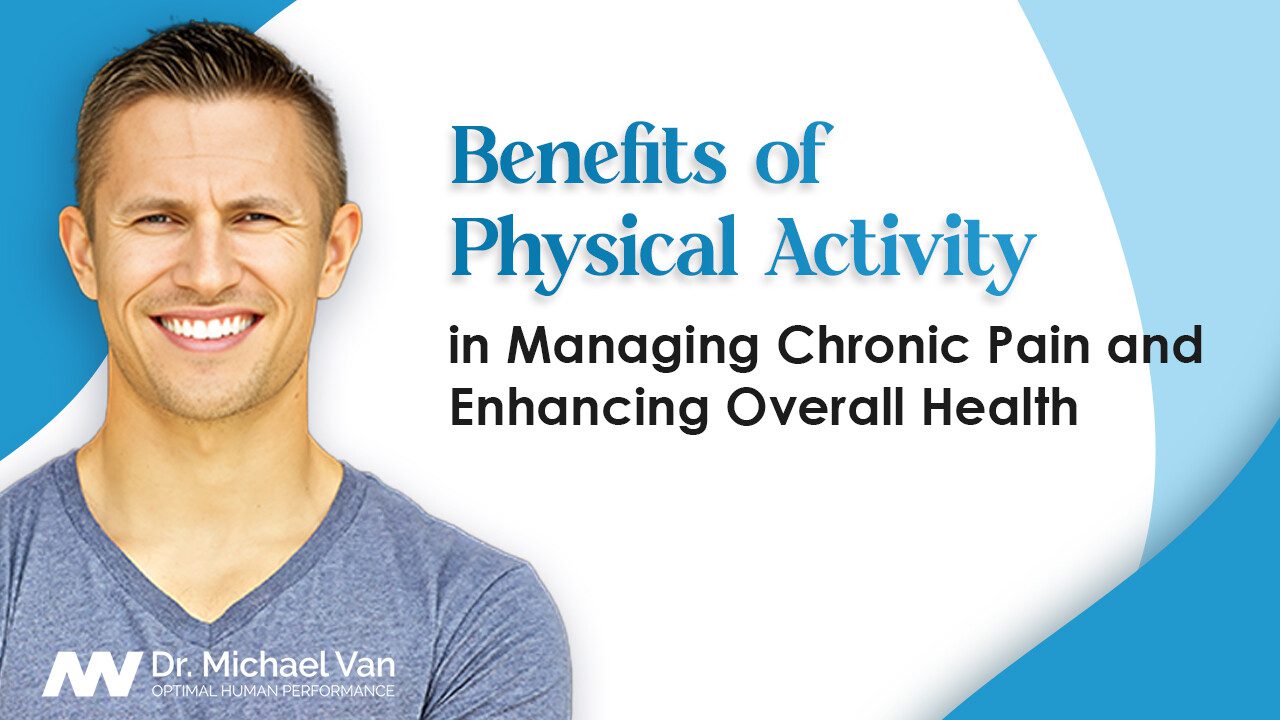Benefits of Physical Activity in Managing Chronic Pain and Enhancing Overall Health

Dealing with chronic pain can significantly impact an individual's quality of life, often leading to a decreased ability to participate in daily activities and enjoy life to its fullest. In many cases, people with chronic pain conditions may hesitate to engage in physical activity, fearing that it could worsen their pain or cause further injury. However, research suggests that incorporating a carefully designed and appropriate exercise routine can provide numerous benefits in managing chronic pain and enhancing overall health.
Dr. Michael Van, a proponent of holistic health transformation, aims to help patients understand the importance of physical activity as a crucial component of their pain management journey. By adopting a balanced approach that includes an appropriate exercise regimen, individuals dealing with chronic pain can find lasting relief, improve their mental and physical well-being, and gain greater control over their health.
With Dr. Michael Van's expertise and guidance in holistic health solutions, those experiencing chronic pain will be empowered to embrace the numerous benefits of physical activity as part of their overall health transformation journey.
Stay tuned to our blog for invaluable information regarding the role of exercise in pain management and overall wellness, and follow Dr. Van's ongoing support in pursuing a healthier, active, and pain-free lifestyle.
The Science Behind Physical Activity and Chronic Pain Relief
Engaging in regular physical activity has been proven to provide numerous benefits for those dealing with chronic pain. Exercise not only helps improve overall functioning but also addresses some of the underlying factors associated with pain, such as muscle weakness and tense or tight muscles.
Physical activity stimulates the release of endorphins, the body's natural pain-reliever, which can reduce pain perception and improve mood. Additionally, exercise can enhance blood flow and oxygen delivery to tissues, supporting healing and recovery in affected areas.

Subscribe To Dr Mike's MVP Newsletter!
Exclusive content, interesting topics, real insights.

Subscribe To Dr Mike's MVP Newsletter!
Exclusive content, interesting topics, real insights.
Developing an Appropriate Exercise Plan for Chronic Pain Management
While it's clear that physical activity can offer significant benefits for individuals experiencing chronic pain, it's essential to develop a well-balanced and tailored exercise plan that considers personal preferences, limitations, and pain levels. To get started, consider the following steps:
- Consult with a healthcare professional: Before beginning a new exercise program, always consult with a qualified healthcare professional, such as a doctor or physical therapist, to ensure that the activities you're planning are safe and appropriate for your unique situation.
- Start slow and steadily progress: When initially starting an exercise regimen, it's crucial to begin at a manageable pace and gradually increase the intensity and duration of activities. This will help minimize the risk of injury or exacerbating pain while allowing the body to adapt to increased activity levels.
- Choose diverse types of exercise: Incorporating a combination of aerobic activities, strength training, and flexibility exercises can offer well-rounded benefits for pain management and overall health. Aim to include a variety of activities that you enjoy and can comfortably perform.
- Listen to your body: Pay close attention to your body's responses during exercise and always respect your pain levels. Adjust your routine based on how you feel, and if you experience increased pain or discomfort, consult with your healthcare professional for guidance.
Types of Exercises for Chronic Pain Management and Overall Health
Various types of exercises can provide different benefits for those dealing with chronic pain. Consider incorporating the following activities into your workout routine:
- Aerobic activities: Low-impact aerobic exercises like walking, swimming, or cycling can improve cardiovascular health, support weight management, and promote healing by increasing blood flow to painful areas. Aim for at least 30 minutes of moderate-intensity aerobic activity most days of the week.
- Strength training: Strength training exercises, such as resistance bands or light weights, can help build muscle strength and endurance while improving joint mobility and stability. Aim to include strength training activities at least two to three days per week, targeting all major muscle groups.
- Flexibility exercises: Regular stretching and flexibility exercises, such as yoga or Pilates, can help relieve muscle tension, improve posture, and decrease pain by maintaining or improving joint flexibility. Consider incorporating flexibility exercises into your daily routine or attending a guided class tailored for individuals with chronic pain.
Overcoming Barriers to Physical Activity
Many individuals with chronic pain face barriers to regular physical activity. These barriers might include a lack of confidence, fear of exacerbating pain, or limited access to appropriate exercise facilities. To overcome these challenges, consider the following strategies:
- Start with a support system: Enlist the help of a personal trainer, physical therapist, or even a friend or family member who understands your pain condition and can assist in developing and implementing a safe, effective exercise plan.
- Break down mental barriers: Work on overcoming fear by educating yourself on the benefits of exercise and how it can help manage chronic pain. Develop a positive mindset and focus on recognizing and celebrating progress rather than striving for perfection.
- Find suitable exercise environments: Look for exercise facilities or programs designed specifically for individuals with chronic pain, or choose activities that can be performed in the comfort of your own home, such as walking or online exercise classes.
The Impact of Physical Activity on Mental Health
In addition to its physical benefits, engaging in regular physical activity can also have a positive impact on mental health. Exercise has been proven to help reduce stress, anxiety, and depression, all of which are common in individuals dealing with chronic pain. By incorporating physical activity into your daily routine, you can also improve sleep quality, boost self-esteem, and enhance overall emotional well-being.
Conclusion
Physical activity plays a vital role in managing chronic pain and promoting overall health transformation. By developing a well-balanced and tailored exercise routine, individuals with chronic pain can experience lasting relief, improved mental and physical well-being, and greater control over their health.
Need chiropractic treatment for body pain? Dr. Michael Van's commitment to holistic health education empowers patients to embrace the numerous benefits of physical activity as part of their health transformation journey.
Dr. Michael Vanderschelden, DC
18600 Main St STE 110
Huntington Beach, CA 92648
Copyright ©2025
Site designed by iTech Valet
Subscribe To Dr Mike's MVP Newsletter. Exclusive Content ONLY!
Dr. Michael Vanderschelden, DC
18600 Main St STE 110
Huntington Beach, CA 92648
Copyright ©2025
Site designed by iTech Valet
*These statements have not been evaluated by the Food and Drug Administration. These products are not intended to diagnose, treat, cure or prevent any disease.
